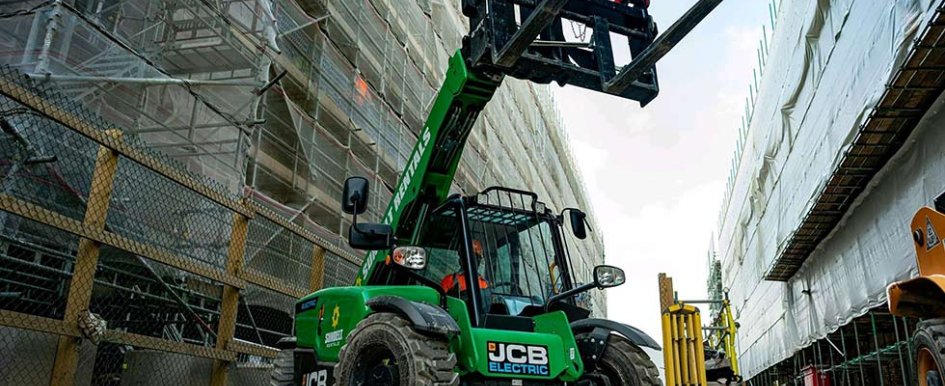
Whether it’s an excavator, scissor lift, telescopic handler or light tower, all-electric equipment is increasingly available in today’s marketplace. Sustainability has prompted many companies to define their emissions goals for the future.
Even so, electric equipment technology is still quite new, bringing with it certain misconceptions and concerns about investing in it. Rental can help eliminate that worry by mitigating the cost and risk of making a purchase. Companies can test the equipment first to learn about its performance and benefits.
To gain a better understanding of electric equipment, it helps to separate common misconceptions from the facts.
Myth No. 1: Electric equipment is less powerful than diesel equipment.
Electric equipment can provide more power than its diesel counterparts since the motors are designed to more efficiently manage how the power is used. For example, an all-electric skid steer can provide power for multiple machine functions to be used at once, whereas a hydraulic machine would be limited. Plus, electric motors, on average, convert approximately 85% of their electrical energy into motion. That compares to about 40% of energy from an internal combustion engine. That power and efficiency can help complete jobs faster, making it an attractive option when deadlines are tight.
The performance of this equipment is exceptionally reliable. The manner in which manufacturers design, develop
and test electric equipment ensures it can manage the same, if not more, applications as an internal combustion equivalent.
Myth No. 2: Electric equipment is difficult and time-consuming to charge.
Electric equipment requires a change in mindset and behavior compared to fueling, but it isn’t difficult. Users need to take advantage of opportunity charging to keep the equipment up and running when it’s needed. With this process, charging can take place during breaks, over the lunch hour or when the equipment isn’t needed for the job.
Having the right jobsite layout makes it easy to top off power to the battery. This means making the right power source readily accessible to maximize the charging opportunity, whether it is permanent power or a temporary power such as an energy storage solution. Since various machines have multiple charging requirements, it is important to understand the power needs of the site in order to maximize production and minimize charging times.
The best way to extend the battery life is to prevent the charge from falling lower than 20% or going higher than 90%.
Myth No. 3: Electric equipment maintenance is difficult.
Electric equipment can have up to 50% fewer parts than a diesel machine, so there is less opportunity for breakdowns. The absence of belts, filters and other moving parts simplifies maintenance and significantly reduces the risk of downtime for service and cleanup, which supports greater productivity.
Telematics systems also monitor the battery’s health to make sure it is functioning properly and allow for proactive care when necessary.
Myth No. 4: Electric equipment is expensive to use.
Because of the elevated upfront purchase price, the rental rate for electric equipment is slightly higher than that of a diesel machine. Even so, that premium rate is typically offset by the lack of fuel and the additional operational expenses tied to refueling. The energy to charge the equipment is significantly less expensive than the fuel required to complete the same task. Overall savings will vary based on how long the equipment operates, the application at hand and location, since fuel prices vary across the country.
Myth No. 5: Electric equipment is unsafe.
Due to the significant reduction in noise, battery-powered equipment has improved safety benefits versus an internal combustion machine. Operators have more awareness of what’s around them and can better hear communications on the jobsite instead of listening to engine noise all day. Because electric equipment is significantly quieter, it is imperative that others on the jobsite pay attention when it is in operation to avoid injury.
Regarding maintenance and repairs, it is important that only technicians trained in hazardous voltage access the electrical system of battery-powered equipment.
Making Electric Easy
Renting electric equipment avoids risk of investing in new technology and also provides companies with operational support. Contractors can access clean power solutions to charge the equipment, as well as consulting services to ensure the right equipment is in place. Rental partners can also help determine if long-term rental is a good option for implementing electric equipment. Longer-term rental of equipment can often be more cost effective. In the case of electric equipment, long-term rental can help contractors reach sustainability goals and gain operational efficiencies.
